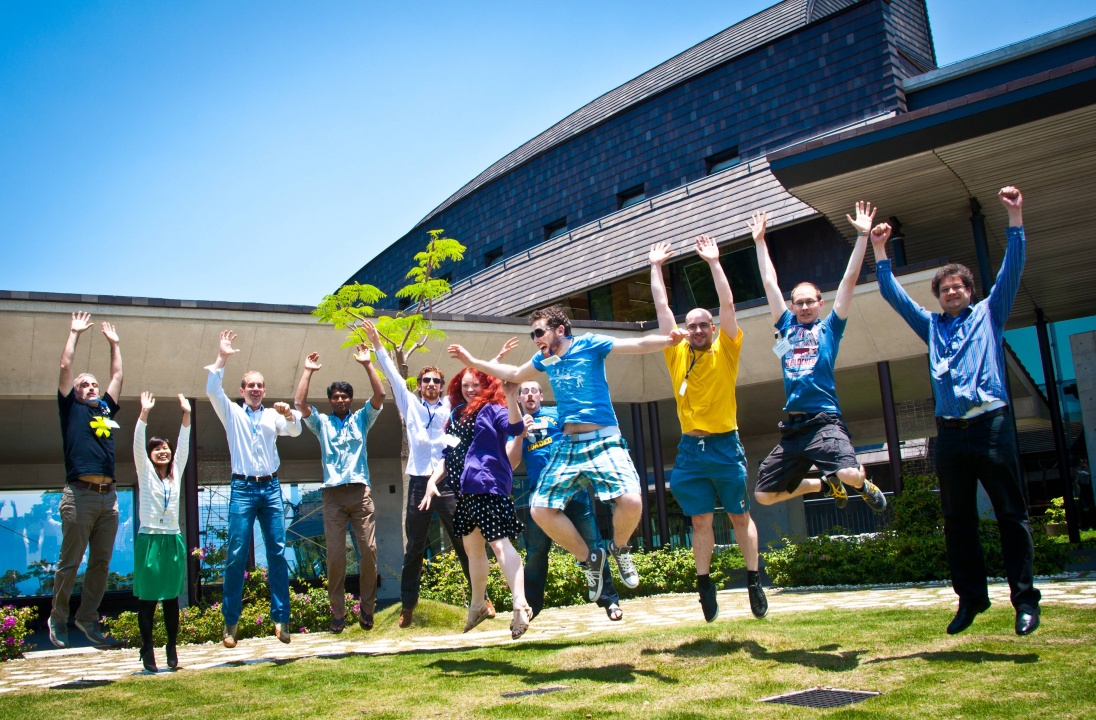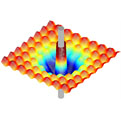FY2011 Annual Report
Quantum System Unit
Professor Thomas Busch

Abstract
The laws of quantum mechanics allow engineering and operating technology in a way that is fundamentally different to what we know today. Quantum information processors, quantum communication devices and quantum measurement apparatus are a few examples where an enhanced understanding of quantum mechanical coherence can be used to achieve tasks that are classically impossible.
Progress in this area depends on many factors, and our group concentrates on identifying and describing systems in which ideas and concepts of quantum technologies can be implemented today. Ultracold quantum gases are one such system, which allows maintaining coherence over a long times and is at the same time highly accessible.
1. Staff
- Dr. Chandrashekar Madaiah, Researcher
- Dr. Steve Campbell, Researcher
- Dr. Ciaran Phelan, Researcher
- Dr. Jeremie Gillet, Researcher
- Dr. Miguel Angel Garcia March, Researcher
- Dr. Gianluca Giorgi, Researcher
- Dr. John Goold, Researcher
- Thomás Fogarty, Student
- Nicola Lo Gullo, Student
- Tadhg Morgan, Student
- Tara Hennessy, Student
- Lee O’Riordan, Student
- Sawako Koki, Research Administrator
2. Collaborations
- Theme: Impurities in one-dimensional quantum gases
- Type of collaboration: Joint research
- Researchers:
- Dr. Jim McCann, Queen’s University Belfast, UK
- Dr. Jim McCann, Queen’s University Belfast, UK
- Theme: Multipartite entanglement in small atomic samples
- Type of collaboration: Joint research
- Researchers:
- Dr. Mauro Paternostro, Queen’s University Belfast, UK
- Dr. Mauro Paternostro, Queen’s University Belfast, UK
- Theme: Adiabatic techniques for ultracold atoms
- Type of collaboration: Joint research
- Researchers:
- Dr. Thomas Fernholz, University of Nottingham, UK
- Dr. Thomas Fernholz, University of Nottingham, UK
- Theme: Entaglement in coupled ion systems
- Type of collaboration: Joint research
- Researchers:
- Prof. Giovanna Morigi, Universität des Saarlandes , Germany
- Prof. Giovanna Morigi, Universität des Saarlandes , Germany
- Theme: Non-markovian master equations
- Type of collaboration: Joint research
- Researchers:
- Prof. Francesco Petruccione, University of Kwazulu Natal , South Africa
- Prof. Francesco Petruccione, University of Kwazulu Natal , South Africa
- Theme: Phase space methods for ultracold quantum gases
- Type of collaboration: Joint research
- Researchers:
- Prof. Bryan Dalton, Swinburne University, Australia
- Prof. Bryan Dalton, Swinburne University, Australia
3. Activities and Findings
Quantum Interfaces Using Optical Near-fields
- Full description of the behaviour of a nano-fibre in an optical lattice and demonstration that atomic Fock states can be created.
- Development of a technique to create multi helix potentials around optical nano-fibres using angular momentum carrying beams.
Matter-Waves as Quantum Engineering Tools
- Development of a set of equations to describe mixtures of atoms in the strong and weak correlation limit.
- Description of an experimentally feasible setup to test the creation of long-distance entanglement in a linear ion trap.
- Development of detailed understanding of the decoherence process of an impurity in an atomic environment through the concept of Anderson's Orthogonality Catastrophe.
Quantum State Preparation for Single Atoms
- Significant enhancement in calculating correct radio frequency potentials for single atoms on atom chips using Floquet theory.
- Development of a suite of code to significantly speed up fully 3 dimensional calculations of quantum dynamical behaviour using GPU computational techniques.
Quantum Walks
- Description of behaviour of entanglement in two-dimensional quantum walks in the presence of different sources of noise.
- Development of a model for calculating percolation properties in 2 dimensional lattices with broken connections.
Other
- Full description of a measurement scheme for coherence in a quantum solid-state device.
4. Publications
4.1 Journals
- S. Campbell, A. Smirne, L. Mazzola, N. Lo Gullo, B. Vacchini, Th. Busch & M. Paternostro, Critical assessment of two-qubit post-Markovian master equations. Phys Rev A 85, doi:Artn 032120Doi 10.1103/Physreva.85.032120 (2012).
4.2 Books and other one-time publications
Nothing to report
4.3 Oral and Poster Presentations
- Th. Busch, Probing a Many-particle System Using a Single Qubit, Quantum Information and Measurement, Berlin, Germany, Mar 21, 2012
- J. Goold, T. Fogarty, M. Paternostro, and Th. Busch. Embedding a single quantum bit in an ultra-cold Fermi sea, Bose-Einstein Condensation 2011, San Feliu, Spain, Sept 11, 2011
- J. Li, T. Fogarty, C. Cormick, J. Goold, Th. Busch, M. Paternostro, Tripartite non-locality and continuous-variable entanglement in thermal states of trapped ions Photonics Ireland, Dublin, Ireland, Sept 8, 2011
- J. Goold, T. Fogarty, T. Morgan, T. Hennessy, and Th. Busch Effects of impurity acceleration on a Tonks gas ring, Photonics Ireland, Dublin, Ireland, Sept 8, 2011
- N. Lo Gullo, Th. Busch, M. Palma, M. Paternostro. Coupling matter wavers to nano-mechanical oscillator, Photonics Ireland, Dublin, Ireland, Sept 8, 2011
- T. Fogarty, J. Goold, M. Paternostro, and Th. Busch. Quantum bit decoherence in the presence of degenerate matter waves, Photonics Ireland, Dublin, Ireland, Sept 7, 2011
- T. Hennessy, Th. Busch. Manuipulating atoms in optical lattices using the evanescent field around an optical fibre, Photonics Ireland, Dublin, Ireland, Sept 8, 2011
- T. Morgan, B. O'Sullivan, Th. Busch, Matter wave transport using adiabatic techniques, Photonics Ireland, Dublin, Ireland, Sept 8, 2011
5. Intellectual Property Rights and Other Specific Achievements
Nothing to report
6. Meetings and Events
Nothing to report
7. Other
The group is currently also funded by a Science Foundation Ireland grant and some of the results reported are possible due to the joint funding.



